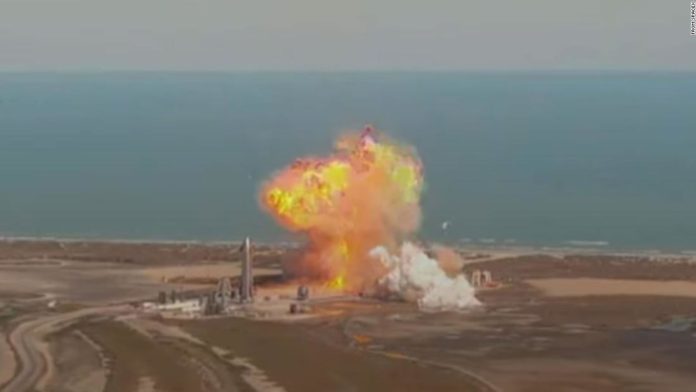The rocket’s three engines ignited, turned off, and then re-ignited for the landing as planned, however the rocket burst into a fireball when it returned to the launch pad. It was not immediately clear what went wrong.
The test launch comes after the 160-foot tall rocket prototype had been stranded on its launchpad in the Texas over the weekend. It was poised to take off for the test launch last week, but it stayed grounded because SpaceX violated a public safety agreement it had with federal regulators during a previous test launch, according to the Federal Aviation Administration.
The FAA reinstated SpaceX’s authorization to launch its rocket prototypes late Monday, according to a statement from the agency.
The company did not respond to requests for comment for this story, nor has it responded to requests for comment in more than eight months.
At the root of the rift between SpaceX and the FAA was a test launch SpaceX carried out in December of a prototype known as Starship SN8, one in a series of early prototypes the company has built in its efforts to design a rocket capable of ferrying the first humans to Mars. Prior to that launch, SpaceX had “sought a waiver to exceed the maximum public risk allowed by federal safety regulations,” according to the FAA, but the agency denied that request.
It is not clear if the FAA would have investigated the company regardless of whether SN8 landed successfully.
The FAA was already focused on reconfiguring its launch licensing process to make it more “streamlined.” But it’s not clear if the updated procedures, which are expected to go into effect in the near future, would have helped SpaceX quickly obtain authorization to loosen the public safety restrictions on its launch license.
Source : Nbcnewyork













